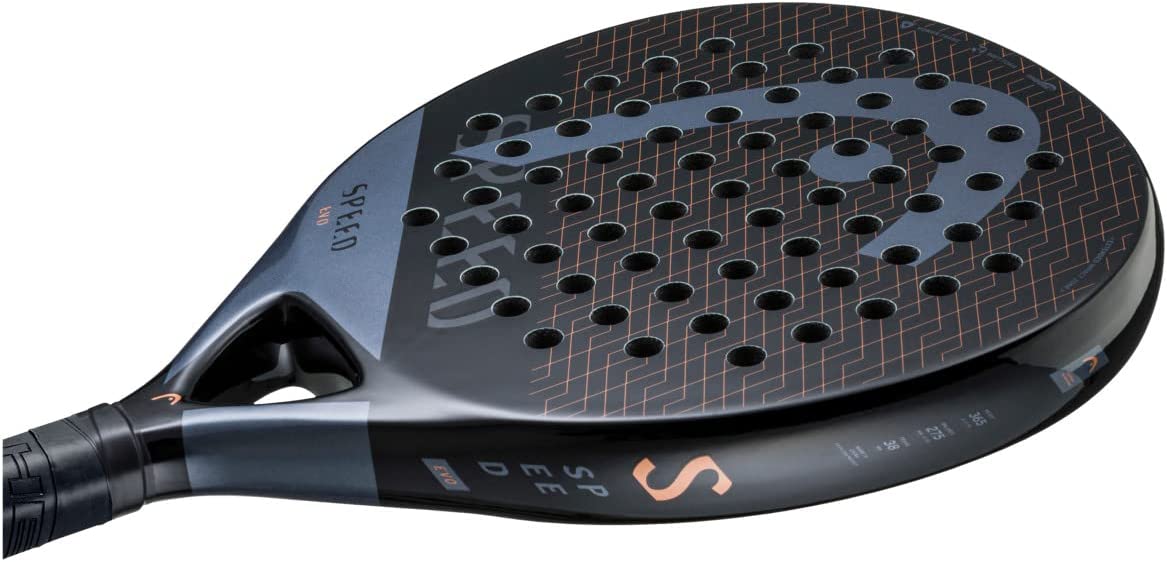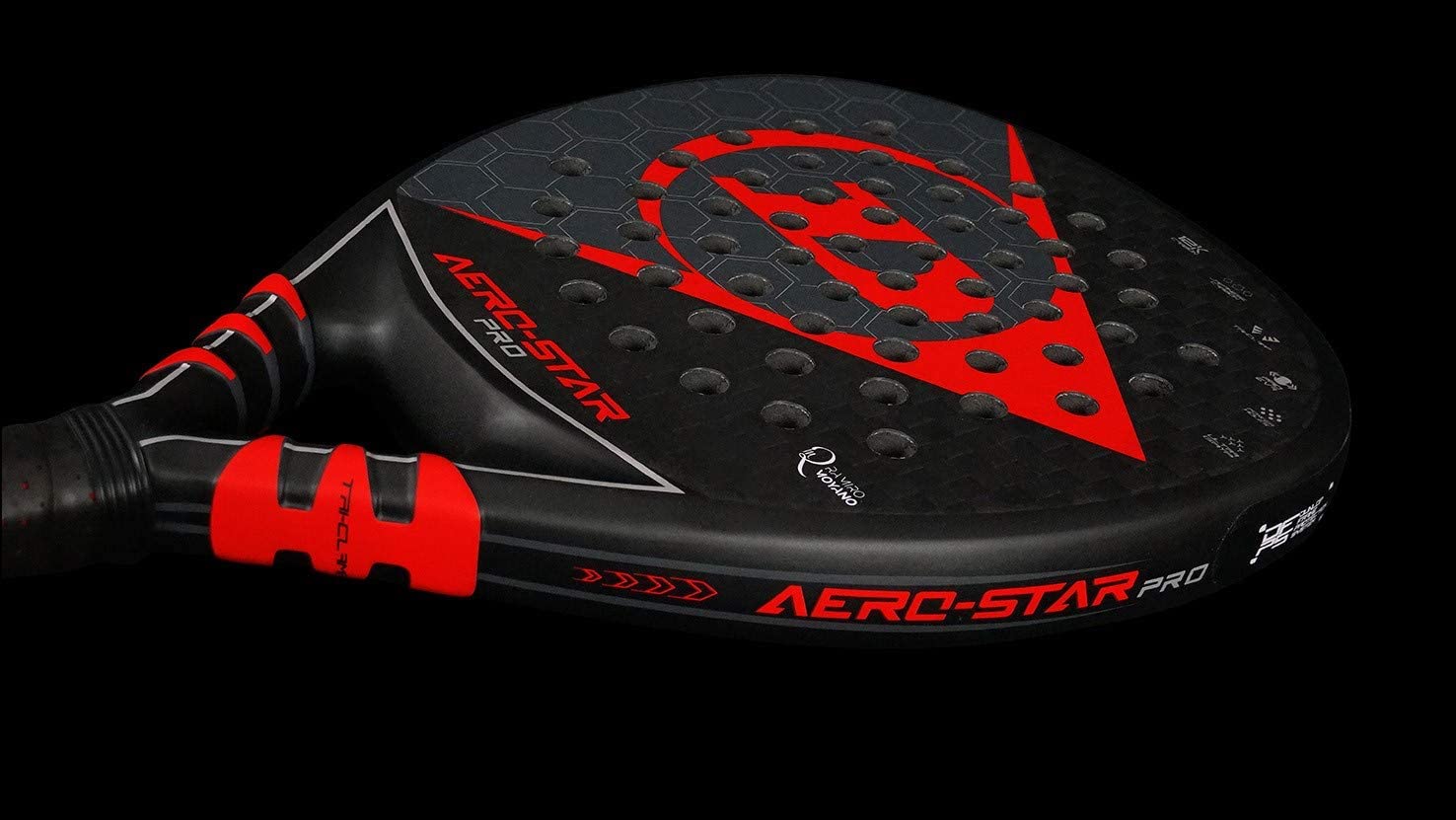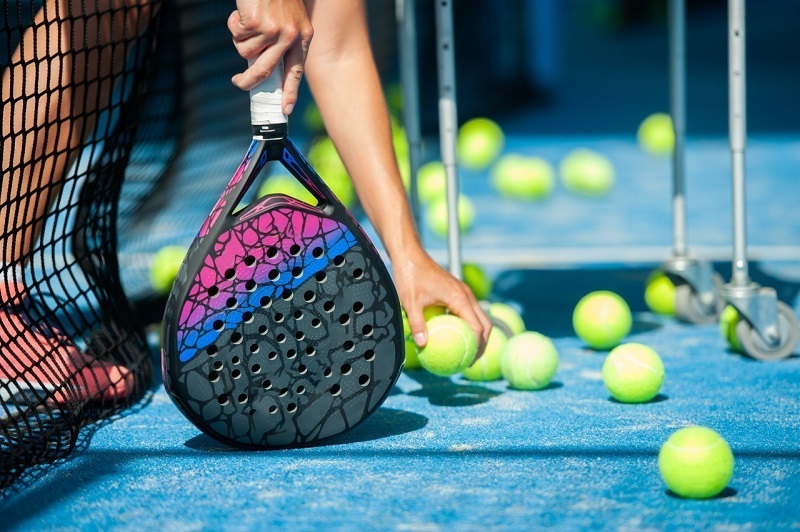The padel rackets are one of the key elements for practising this increasingly popular sport around the world.
One of the most important choices every player must make is that of the racket material padelwhich affects its strength, manoeuvrability, power and control.
There are different types of materials used in the manufacture of padel racquets, each of which has unique characteristics and affects the racquet's performance differently.
In this article, we will explore the differences between the various materials used for padel rackets to help you choose the one best suited to your needs and playing style.
padel carbon racket

Carbon is one of the most common materials used in the manufacture of the padel racket. Below, I list the advantages and disadvantages of using carbon:
Advantages:
- LightnessCarbon is a light but strong material, which makes it ideal for the manufacture of padel rackets. A lighter racket allows for greater manoeuvrability and a faster swing speed, which increases the power of the shot.
- ResistanceCarbon is a strong and durable material, which ensures that your racket will last longer. In addition, its resistance to deformation makes the racquet less prone to damage during play.
- TorsionCarbon has greater torsion resistance than other materials, which means that the racquet retains its shape during ball impact. This improves the control and precision of the shot.
- VibrationsCarbon is a material that greatly reduces vibration, which helps reduce player arm fatigue.
Disadvantages:
- PriceCarbon racquets tend to be more expensive than those made of other materials, which may be a limiting factor for some players.
- Sensation of gameSome people may not appreciate the playing feel offered by a carbon racket. Indeed, being a rigid material, it may not offer the same playing feel as racquets made of softer materials, such as EVA rubber or polyethylene.
- PowerAlthough carbon may offer more hitting power due to the racquet's light weight, this may be at the expense of control and precision. A carbon racquet may require more technical skill and game control from the player.
The padel intermediate level rackets are generally made of carbon.
padel Graphene racket

The graphene is a relatively new material that has only been introduced into the racquet industry by padel in recent years. Below, I list the advantages and disadvantages of using graphene:
Advantages:
- LightnessLike carbon, graphene is a lightweight material that allows for more manoeuvrable racquets and greater swing speed. Its lightness makes it possible to achieve greater stroke power without losing control.
- ResistanceGraphene is one of the strongest materials in existence, making it ideal for the manufacture of padel rackets. A graphene racquet is less susceptible to damage and deformation than other racquets, which makes it more durable.
- ControlGraphene is a material that offers a high level of control, which helps maintain the precision of the shot. Its torsion resistance and rigidity provide good stability during play.
- Comfortgraphene is a material that dampens vibrations, which helps to reduce arm fatigue of the player and improve comfort during play.
Disadvantages:
- PriceGraphene is an expensive material, and racquets made of graphene tend to be more expensive than those made of other materials.
- Sensation of playSome people may not appreciate the playing feel offered by a graphene racquet. Indeed, being a very rigid material, it may not offer the same playing feel as rackets made of softer materials such as EVA rubber or polyethylene.
- CustomisationGraphene racquets can be difficult to customise due to their stiffness. This means that it may be difficult to adjust the racquet's weight and balance to the player's preferences.
Also, as you mentioned, Head is one of the brands using graphene in their racquets from padel. Head developed a technology called 'Graphene Touch', which uses graphene in combination with other materials to improve racquet comfort and performance. This technology has been well received by the padel player community and has been successfully used in many of their racquets.
padel fibreglass racket

There glass fiber is a material commonly used in the padel racket industry. Below, I list the advantages and disadvantages of using glass fibre:
Advantages:
- Affordabilityfibreglass is one of the least expensive materials used in the manufacture of padel rackets, which makes fibreglass rackets very affordable for players on a budget.
- Flexibilityfibreglass is a relatively flexible material that offers a good feel and a wide power window. Its flexibility helps reduce vibrations and increase shot accuracy.
- Impact resistanceFibreglass rackets are very resistant to impact and damage, making them ideal for players who tend to take a lot of offensive shots.
Disadvantages:
- WeightGlass fibre is a relatively heavy material compared to other materials used in the manufacture of padel rackets, such as carbon or graphene. This means that fibreglass racquets can be less manoeuvrable and slower to swing than other racquets.
- DurabilityIn the long term, fibreglass racquets may be less durable than racquets made of stronger materials such as carbon or graphene. Indeed, the material may be subject to deformation, cracks or breakage, especially when subjected to intensive use.
- ControlGlass fibre may be less precise than other materials used in the manufacture of padel rackets. In fact, its flexibility can make the racket less stable during play and the shot less accurate.
In summary, fibreglass racquets are often chosen by players looking for a good combination of flexibility, durability and affordability. However, if you are an experienced or advanced player, you may prefer a racquet made of a lighter and stronger material such as carbon or graphene.
padel racket frame material alternatives

In addition to the materials already mentioned, there are other material options used in the structure of padel rackets. For example:
- Kevlar: Kevlar is a synthetic material used to increase the strength and durability of the racquet. However, being a relatively heavy material, it can affect the racquet's handling.
- TitaniumTitanium is a light and strong metal that is often used to construct the frame of padel rackets. However, it is also an expensive material, which makes it less accessible for players on a tight budget.
- Other composite materialsThere are many combinations of materials that can be used in the structure of padel rackets, such as carbon fibre-aramid (used to increase impact resistance) or carbon fibre-basalt (used to increase stability and power).
In general, the choice of frame material depends on the individual player's playing preferences and skill level. Advanced players often prefer lighter and stronger materials, while beginner players may opt for cheaper and more accessible materials.
Racquet core material padel

The racquet core from padel is the inner part of the racquet, which gives the racquet its ability to absorb vibrations and generate power and control over shots. The materials used for the core of padel rackets can be divided into three main categories:
- EVA rubber: EVA rubber is a very common synthetic material used for the core of padel rackets. It is an elastic foam that offers a good combination of power, control and comfort, while reducing vibration. The density of EVA rubber can vary from soft to hard, affecting the level of power and control offered by the racquet.
- Foam: Foam is a material similar to EVA rubber, but with a lower density. This makes foam-core racquets softer and more comfortable, but with less power and control than EVA rubber-core racquets. Foam is often used in padel racquets for beginners or players looking for a softer playing feel.
- PolypropylenePolypropylene is a lightweight and durable thermoplastic material used for the core of padel rackets. Racquets with polypropylene cores offer greater durability and stability than racquets with EVA rubber or foam cores, but at the expense of playing feel and power generated.
In addition, there are also padel rackets with hybrid cores, i.e. the combination of two or more different core materials in order to achieve a unique combination of power, check and comfort.
Ultimately, the choice of core material depends on the individual player's playing preferences and skill level. I advanced players tend to prefer racquets with EVA rubber or hybrid core materials, while the novice players may opt for foam or polypropylene core for greater comfort and handling.
Difference between EVA tyres

There are different types of EVA rubbers used for the core of padel rackets, which differ in density, stiffness, memory effect and other properties. Here is an overview of the main types of EVA rubbers used for padel rackets:
- Soft EVA rubberSoft EVA rubbers are less dense and offer more comfort and feel. However, due to their low density, they offer less power and control than denser EVA rubbers. This type of rubber is suitable for beginner players or those looking for a softer playing experience.
- Hard EVA rubberHard EVA rubbers are denser and stiffer, offering more power and control than soft EVA rubbers. However, due to their stiffness, they offer a less comfortable playing feel. This type of rubber is suitable for advanced players or those seeking more power and precision in their shots.
- High memory EVA rubberHigh-memory EVA rubbers are rubbers that quickly recover their original shape after being deformed. This means that the racquet retains its original shape even after prolonged use. This type of rubber is ideal for players seeking greater durability and stability over time.
- EVA rubber with low memoryLow-memory EVA rubbers are rubbers that tend to deform and change their original shape after prolonged use. This type of rubber can offer a greater playing feel and comfort, but at the expense of racquet stability and durability.
In general, the choice of the type of EVA tyre depends on the individual player's playing preferences and skill level. Advanced players tend to prefer denser and stiffer EVA rubbers, while beginner players may opt for softer EVA rubbers for more comfort and handling.
If you are looking for the best padel rackets ever, you can find them here.
Racket padel material: conclusions
In conclusion, the material used in the construction of the padel racquet can significantly affect the player's performance and playing feel.
Carbon is a light, strong and rigid material that offers excellent performance and game control, but can be less comfortable than other materials.
Graphene is an even lighter and stronger material than carbon, offering more power, stability and game control, but at a higher price.
Fibreglass is a less expensive and more flexible padel racket material, offering a softer and more comfortable playing experience, but with less power and control than stiffer materials such as carbon and graphene.
The type of EVA rubber used for the racquet core can also significantly affect racquet performance, with denser and stiffer rubbers offering more power and control, but less comfort and feel.
Finally, the choice of material depends on the player's individual preferences and skill level. More advanced players may opt for stiffer and more expensive materials to maximise their performance, while beginner players may prefer softer and more comfortable materials for a better playing experience.